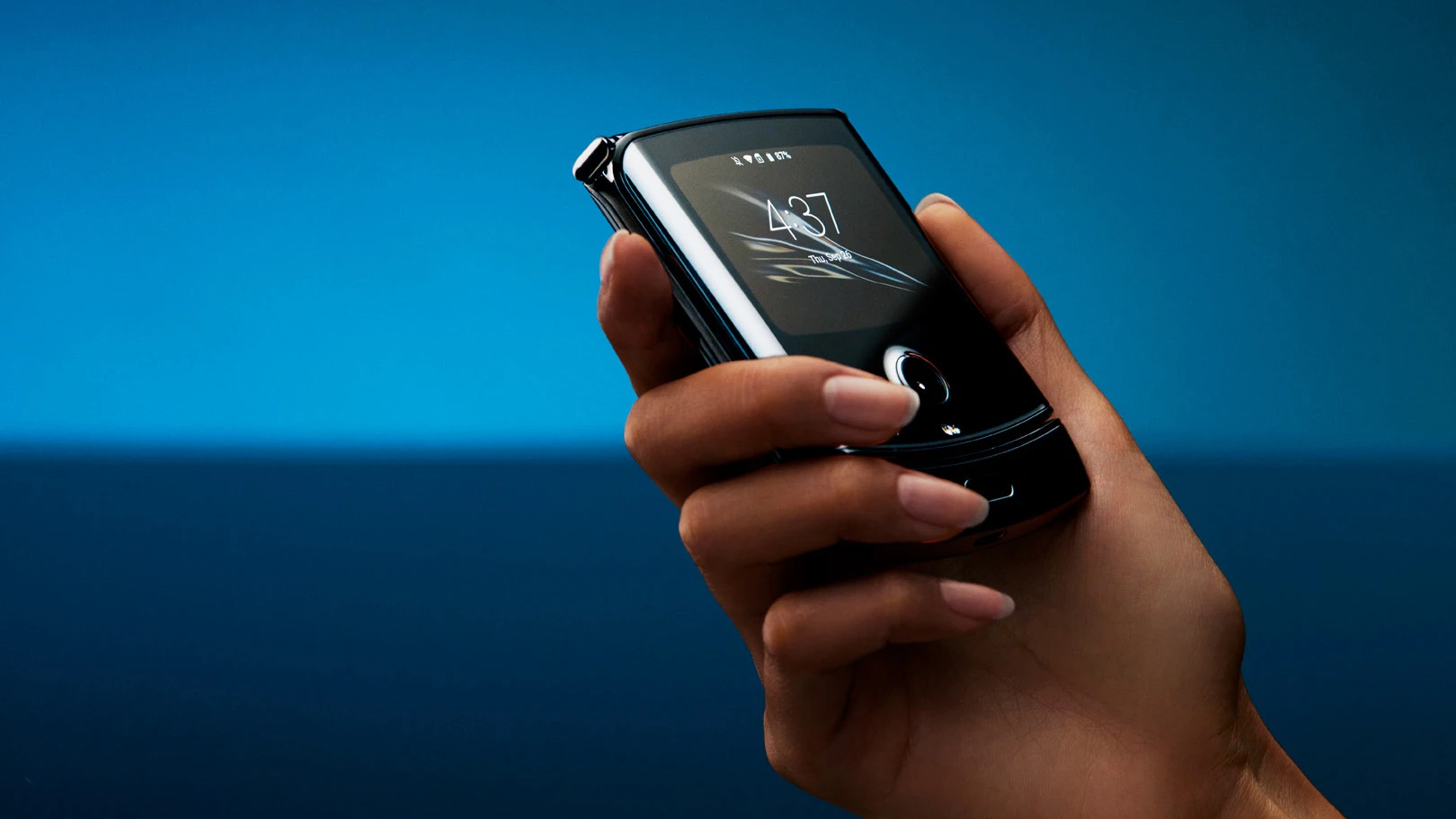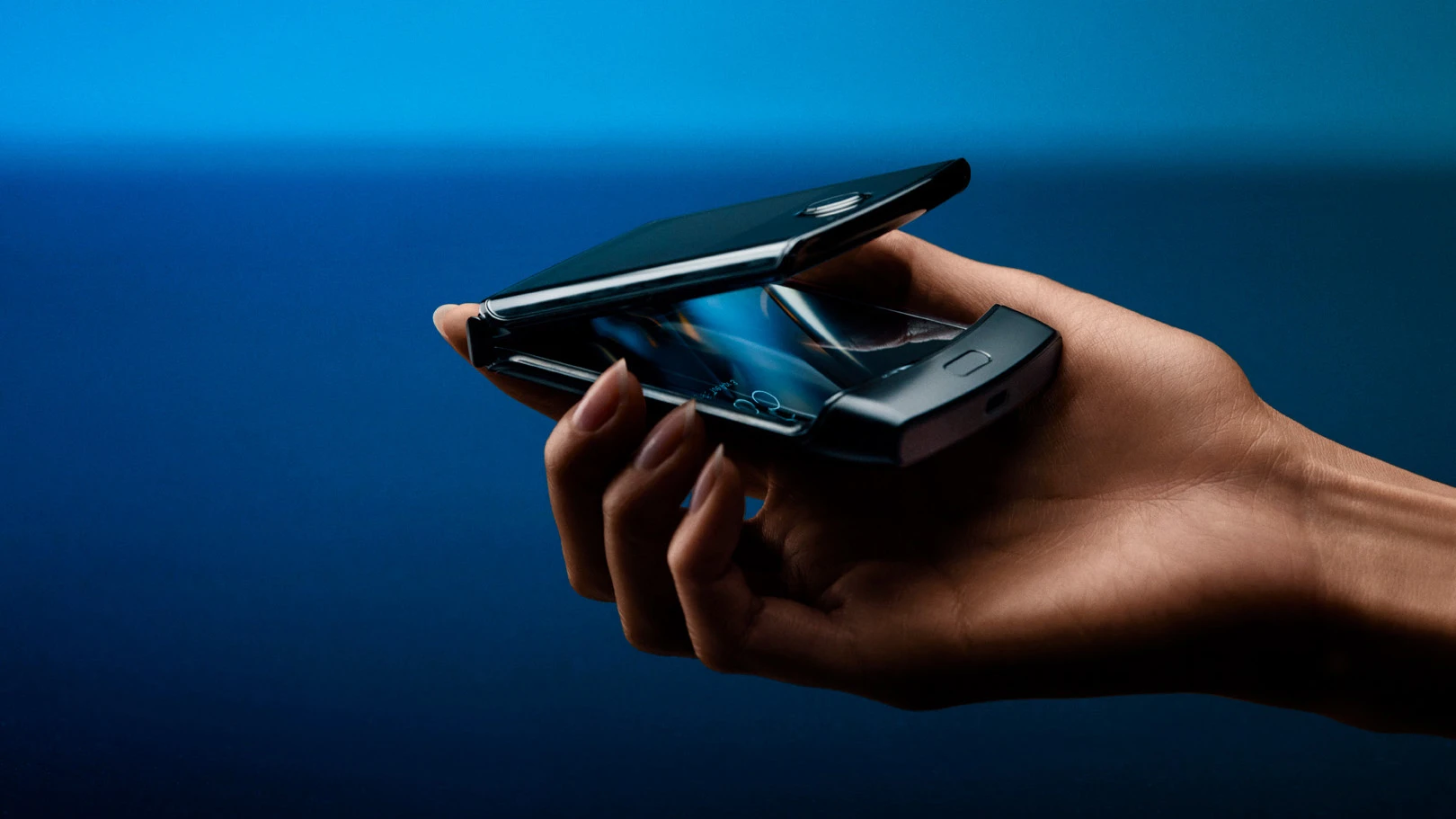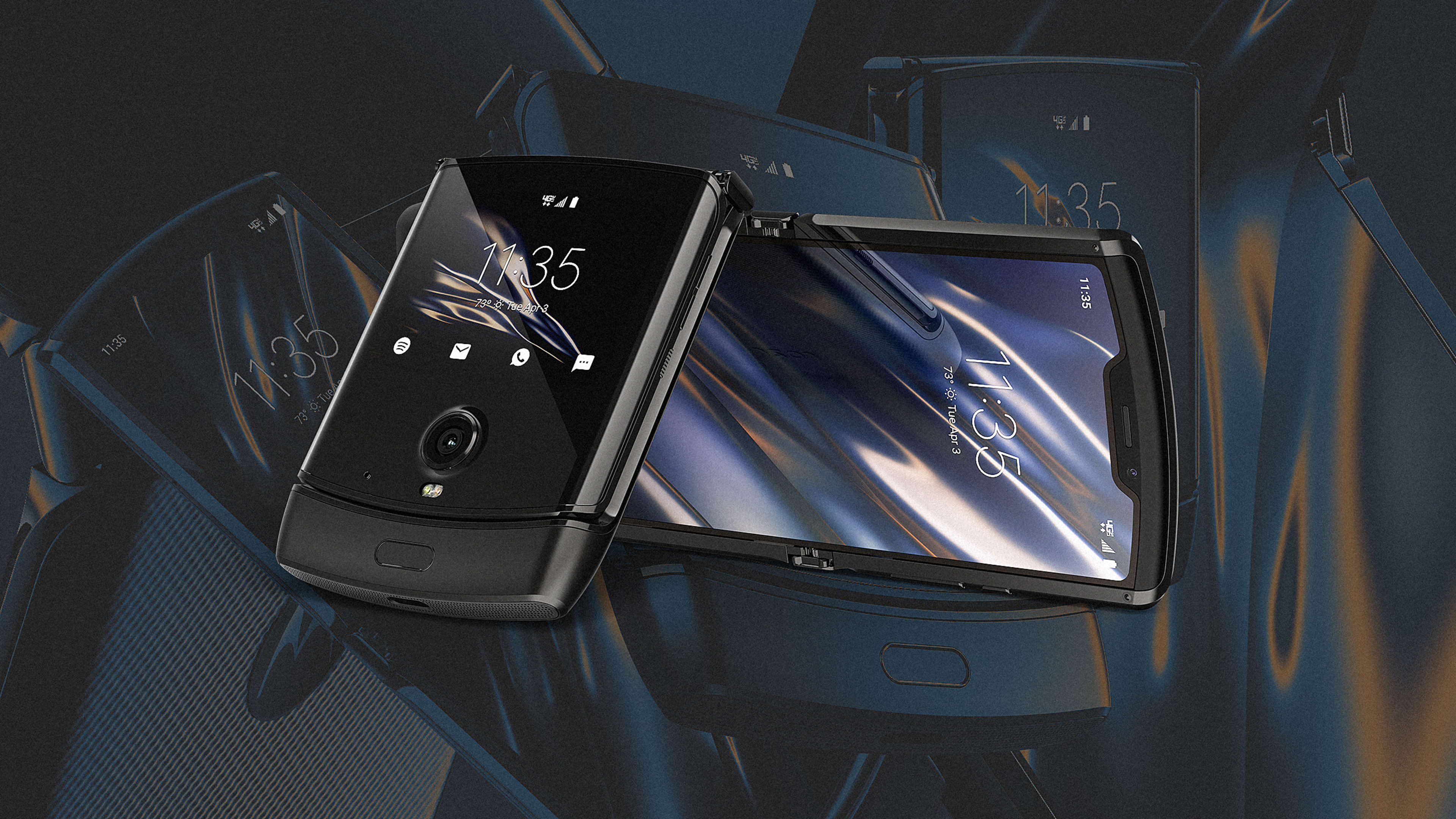I haven’t thought about my phone in a long time. Oh, I check the thing 100 times a day like anyone else. But what I mean is that I haven’t thought much about the ergonomics of it. Over the past decade, the tiny tablet phone got thin, light, and familiar enough that it almost became some numb extension of your own body. It fits in your pocket or car console or hand. It’s like your appendix, but with Twitter!
I’ve spent the past few days with the new Razr ($1,500, out now), the first flip phone of the modern era, with an amazing OLED screen that folds right in half. And now I can’t stop thinking about the ergonomics of my phone.
[Image: Motorola]
Bottom line, I think a folding smartphone makes a whole lot of sense, in theory. But for all sorts of reasons, to hold the Razr is to remember you’re carrying around and interfacing with a piece of technology. And that’s extremely cool for the first 20 minutes. However, for most people, the device is larger, heavier, and not quite as magically convenient as the original Razr that you owned nearly 20 years ago—which makes the phone a classic case of why you might wait for the second or third generation.
The original Razr
The importance of the original Razr to the technology market, released almost 20 years ago, cannot be overstated. It was quirky. Notably wider than phones from competitors such as Nokia, it also had a big chin on the bottom. But its impossibly thin aesthetic was a moonshot of engineering, which, coupled with premium materials such as metal and glass, made it the first fashionable phone.
Years since, the iPhone took over the world, and everyone forgot about the Razr. Apple’s brand of stoic, Bauhaus minimalism replaced the fun of flipping your phone open and looking at a sunburst dial pad. But Razr’s return in 2020 is well timed. With many of the same designers and engineers that worked on the original Razr, Motorola has landed another moonshot: a folding OLED screen. And again, as people become bored of incremental smartphone updates, Motorola and other companies have the opportunity to challenge Apple’s tried and true approach to industrial design—at least for a respectable chunk of the market.
The weight
Open the Razr, and the screen feels almost like glass. Almost. Technically, it’s a coated plastic. It also doesn’t fold completely open, to a flat 180 degrees. So there’s an ever-so-subtle bend at all times, something like 178.5-degrees. You won’t see that bend when the phone is on, though. You need to be inspecting it, obsessively.
None of this bothered me in day-to-day use. The screen is great. It’s bright, rich, and, colorful. And while there’s some question about its long-term durability—a recent CNET test employed a robot to fold it 27,000 times before breaking—Motorola claims it’s lifetime is significantly greater than that (though the company is not sharing a firm number). I’m prone to believe Motorola in this case only because (1) I saw its testing lab, where they drop the thing over and over on concrete, and (2) Motorola already makes the most durable smartphone on the market, so we have no reason to doubt the company’s chops in this regard. In any case, it’s $300 to repair if it does break on you.

But $300 isn’t the number that bothers me. The number that bothers me is 7.23 oz. That’s the weight of the Razr. It’s nearly twice the weight of the original iPhone. It’s heavier than the iPhone 11. It’s heavier than the patty on a 1/3 pound hamburger, and just a pinch of ground beef short of hitting the full half-pounder gut bomb.
It’s heavy for all sorts of fair reasons: the stainless steel housings, the hinge (which features a whole plate spring system that makes the screen folding possible, a true mechanical ballet that I detailed in describing my recent trip to Motorola), and its glass outer screen. Basically, the clamshell is military-grade body armor for the impossibly thin and light folding screen inside.
But take that bistro burger that you need two hands to hold, then squeeze it down into a tiny puck. Then, casually, drop that puck into your back pocket. You know what happens if you aren’t wearing a belt? The Razr tugs your pants down to the edge of your hips, necessitating a quick adjustment. You’ll also find yourself suddenly aware of how large our back pockets have gotten to accommodate the large tablet-y phones of today. The world already reshaped itself around supersized iPhones, so it can be hard to appreciate what Motorola has done.
The feel
My favorite way to use the Razr is, paradoxically, when it’s folded up. The phone features a 2.7-inch outer touch screen, which lets you swipe and scroll notifications, skip ahead in Spotify tracks, or read emails. This means you can check messages without opening your phone and getting sucked into all of the other apps that want to steal your time. But it’s also particularly elegant when you choose to engage deeper: You can be reading an email on the outer screen in a tiny preview, then flip the phone open and read the same email on the full 6.2-inch display.
Motorola’s UX team had to hack apart Android to make this trick work, and it’s the sort of interface breakthrough that will be everywhere in three to five years (in part because Android will be supporting secondary displays better in future iterations).
I like this little version of the Razr so much that I wonder why I didn’t want to flip it open more often. I think part of that comes down to effort and the cumbersome sensation of opening it.

The end effect is that Motorola has engineered a reliable folding screen. But the physical sensation of opening it doesn’t offer the fidget spinner appeal that I crave, something that would make that big cheeseburger worth carrying around. Even Apple made its early, mechanical iPhones a simple joy to unlock—remember swipe-to-open and that little camera click it made when you did?
Perhaps it’s a good thing that opening the Razr isn’t more fun. Perhaps it’s better for the mental health of all of us to use the phone in 2.7-inch mode, like a dumbphone. Perhaps this is good, healthy design because a phone shouldn’t feel like candy to our fingers. But one of the Razr’s core promises is that split-second sensation of repeatable wonder, and it quite literally just doesn’t click.
Motorola’s comeback
Will the new Motorola Razr be as important to the future of smartphones as the original Razr was years ago? If it gets thin enough, and light enough, and fidgety enough, I suspect so.
But if you really want to know what the industry thinks, don’t listen to me; listen to Samsung. For the past several years, Samsung has been punching up at Apple to be the go-to iPhone alternative. Since 2011, its ads have mocked Apple Store lines, frustrating Genius Bars, and even Apple’s decision to make you use a dongle to plug in headphones. But during last night’s Academy Awards, on the evening before countless Razr reviews would flood the internet (it’s been quasi-available since last week), Samsung showed its next folding phone, which will be announced tomorrow. Search “new Razr” on Google this morning and you’ll see the ad “The New Samsung Galaxy | Arrives In: 1 day | samsung.com.”

My interpretation: Motorola, a company that has virtually no chunk of the U.S. market, has Samsung shook on the eve of the announcement of its folding Galaxy phone. Or at least shook enough to counter-advertise a far smaller competitor. That’s unusual.
But Samsung, and the wider world, has reason to notice the Razr. Don’t allow my very nasal inspection of the Razr deter you or undercut the sheer engineering and design accomplishments of this device. The Razr is a taste of the post-Bauhaus world of portable electronics to come. It’s an opinion in technology design that isn’t Apple’s, and that alone is exciting.
Recognize your brand’s excellence by applying to this year’s Brands That Matter Awards before the early-rate deadline, May 3.







